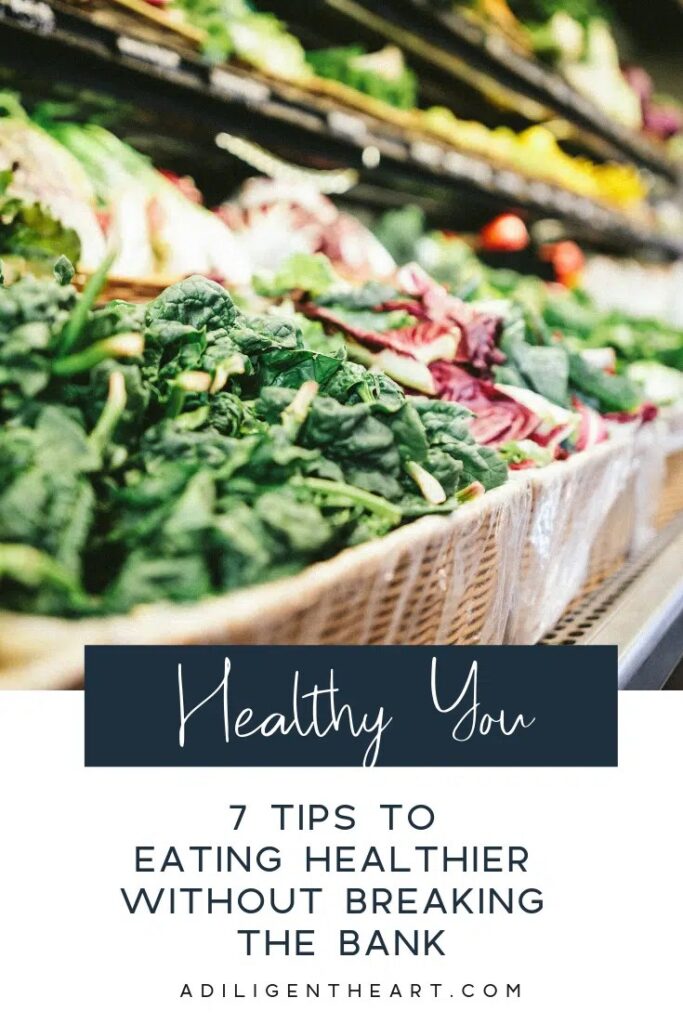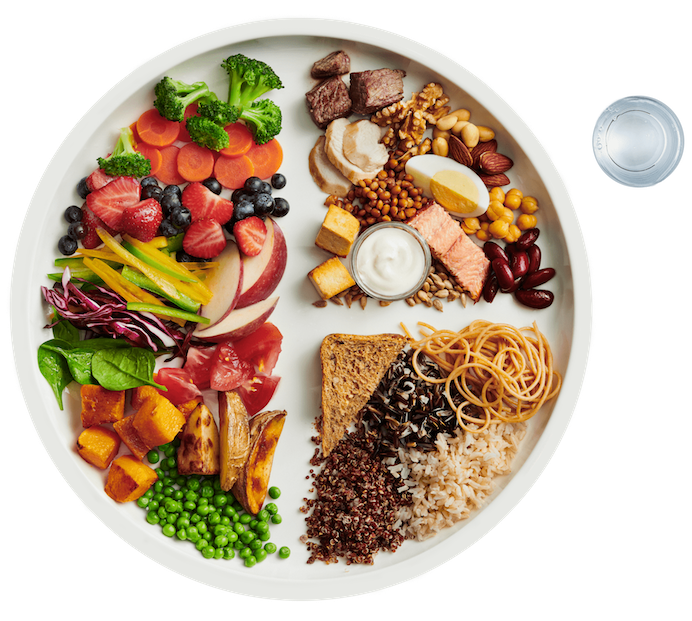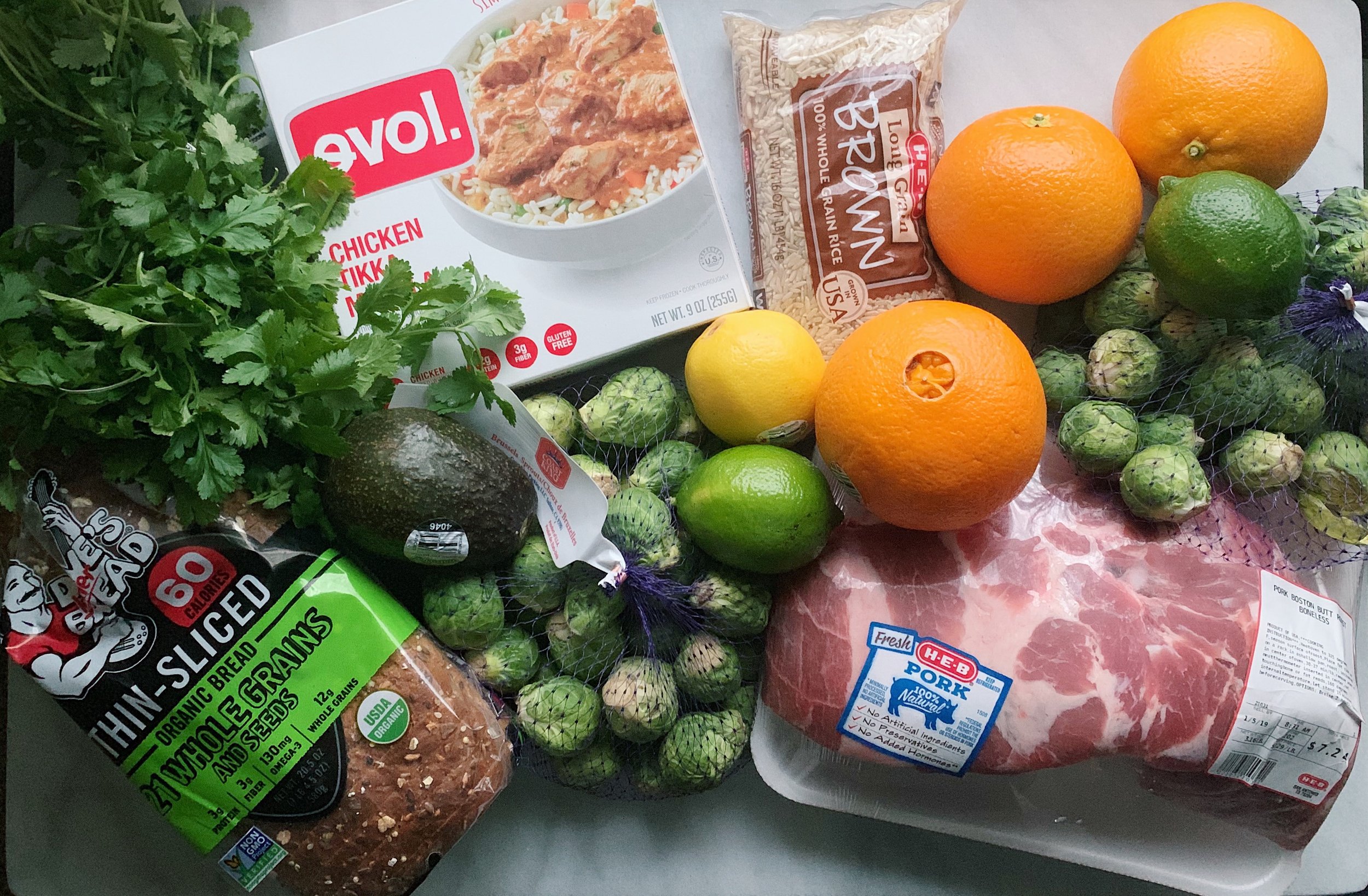I’ve always believed that eating healthy should never feel like a financial burden. That’s why I wrote this article titled “How to Eat Healthy without Breaking the Bank.” In this piece, I’ll be sharing my personal tips and tricks on how to maintain a nutritious diet without emptying your wallet. So, if you’re ready to discover budget-friendly ways to nourish your body and mind, buckle up and let’s get started!

Planning Your Meals
Create a Weekly Meal Plan
One of the key strategies for eating healthy on a budget is to create a weekly meal plan. By planning your meals ahead of time, you can avoid impulsive purchases and ensure that you have all the necessary ingredients on hand. Start by looking through your pantry and refrigerator to see what you already have, then create a meal plan based on those ingredients. Make sure to include a variety of nutritious foods from different food groups to ensure a well-rounded diet.
Make a Grocery List
Once you have your meal plan in place, the next step is to make a grocery list. This will help you stay organized while shopping and prevent you from buying unnecessary items. Take note of the ingredients you need for each meal and add them to your list. It’s also a good idea to check your pantry and refrigerator again before heading to the store to avoid buying duplicates.
Cook in Batch
Cooking in batch is a great way to save time and money. By preparing larger quantities of food, you can have leftovers for future meals or freeze them for later use. This also allows you to take advantage of bulk discounts when buying ingredients. Make sure to invest in quality storage containers that are freezer-safe to keep your batch-cooked meals fresh. Not only does batch cooking save you money, but it also ensures that you always have a healthy option readily available, reducing the temptation to order takeout or indulge in unhealthy snacks.
Smart Shopping
Buy in Bulk
Buying in bulk is a smart strategy to save money on groceries, especially for non-perishable items like rice, pasta, beans, and oats. Warehouse clubs or buying from bulk bins at a local grocery store can be a cost-effective way to get larger quantities at lower prices. However, before purchasing in bulk, make sure to check the expiration dates to ensure that you can use up the items before they go bad.
Shop Seasonally
Shopping for produce that is in season is not only cheaper but also guarantees better quality and flavor. Fruits and vegetables that are in season often have a surplus, leading to lower prices. Local farmers markets are also a great place to find affordable, seasonal produce. Try to incorporate a variety of fruits and vegetables into your meal plan each week to get a wide range of nutrients.
Utilize Frozen and Canned Foods
Frozen and canned foods are often overlooked, but they can be a lifesaver when trying to eat healthy on a budget. Frozen fruits and vegetables are just as nutritious as their fresh counterparts and can be more affordable, especially when certain items are out of season. Canned foods like beans, tomatoes, and fish (such as tuna or salmon) provide a convenient and cost-effective source of protein. Just make sure to choose options with no added sugars or sodium.

Budget-Friendly Protein Sources
Eggs
Eggs are a versatile and budget-friendly source of protein. They are not only affordable but also packed with essential nutrients. Incorporate eggs into your meals in various ways – boiled, scrambled, or in omelets. You can also include hard-boiled eggs in your salads or use eggs as a binding agent in recipes like meatballs or veggie burgers.
Canned Tuna or Salmon
Canned tuna and salmon are excellent options for affordable and convenient protein. They are a great addition to salads, sandwiches, or pasta dishes. Look for options that are packed in water rather than oil to minimize added fats and calories. Canned fish is also a good source of omega-3 fatty acids, which are important for heart health.
Legumes and Beans
Legumes and beans, such as lentils, chickpeas, black beans, and kidney beans, provide a low-cost and nutrient-dense source of protein. They are high in fiber and rich in vitamins and minerals. Add them to soups, stews, salads, or even make your own homemade hummus. Buying dried legumes and beans in bulk and cooking them yourself is even more cost-effective than purchasing canned varieties.
Affordable Fruit and Vegetable Options
Opt for Frozen Fruits and Vegetables
Frozen fruits and vegetables are a fantastic option when trying to eat healthy on a budget. They are picked at their peak ripeness and flash-frozen, locking in their nutrients. Plus, they are often less expensive than fresh produce, especially when certain fruits or vegetables are out of season. Add frozen berries to smoothies, use frozen vegetables in stir-fries or soups, or enjoy them as a side dish for a quick and affordable way to get your daily dose of vitamins and minerals.
Choose In-Season Produce
Choosing in-season produce is not only more cost-effective but also ensures you are getting the freshest and most flavorful options available. Many fruits and vegetables have specific seasons when they are abundant and therefore cheaper. For example, berries are often more affordable in the summer, while root vegetables like carrots and potatoes are more readily available and inexpensive in the winter. Shopping at farmers markets or joining a community-supported agriculture (CSA) program can be a great way to access local, in-season produce at reasonable prices.
Grow Your Own
Growing your own fruits, vegetables, and herbs can be a rewarding and cost-effective way to incorporate fresh produce into your diet. Whether you have a small garden, a balcony, or even just a windowsill, you can grow herbs like basil, mint, or parsley, or even small potted vegetables like tomatoes or peppers. Not only does this save money, but it also allows you to control the growing process and ensure that your produce is free from harmful pesticides.

Economical Whole Grains
Choose Bulk Grains
Choosing bulk grains, such as rice, quinoa, or oats, can be an economical way to incorporate whole grains into your meals. Purchasing grains in larger quantities from bulk bins or stores that offer bulk options can save you money in the long run. Just be sure to store them properly in airtight containers to maintain their freshness and prevent any pests.
Consider Whole Grain Alternatives
Whole grains, such as whole wheat bread, whole grain pasta, and brown rice, provide more nutrients and fiber compared to their refined counterparts. While they may be slightly more expensive than refined grains, they are still a budget-friendly option and offer more nutritional value. Consider replacing white bread with whole grain bread, white rice with brown rice, and regular pasta with whole wheat pasta to boost your intake of whole grains without compromising on taste or budget.
Oats and Rice
Oats and rice are two staple pantry items that are both affordable and versatile. Oats can be used for a hearty and nutritious breakfast option like overnight oats or added to smoothies for extra creaminess. Rice, on the other hand, can be the base for numerous dishes like stir-fries, pilafs, or even stuffed bell peppers. Both oats and rice can be purchased in bulk and have a long shelf life, making them a cost-effective choice for incorporating whole grains into your meals.
Healthy Fats on a Budget
Avocado
Avocados are not only delicious but also an excellent source of healthy fats. While they might seem expensive, you can find them at more affordable prices by purchasing them in bulk or choosing them when they are in season. Avocado can be used in various ways – spread on toast, added to salads, or blended into a creamy dressing or dip. The fats in avocados are beneficial for heart health and can help keep you feeling satisfied.
Nuts and Seeds in Bulk
Nuts and seeds are packed with healthy fats, protein, and fiber, making them a nutritious addition to your diet. Purchase nuts and seeds in bulk to save money and store them in airtight containers to maintain their freshness. They can be eaten as a snack, added to salads or yogurt, or used as toppings for various dishes. Peanut butter and almond butter are also affordable and versatile options for adding healthy fats to your meals or snacks.
Olive or Coconut Oil
Olive oil and coconut oil are both heart-healthy fats that can be used in cooking or as dressings for salads. While they may seem more expensive than other types of cooking oils, a little goes a long way. Look for sales or discounts when purchasing these oils to save money. Keep in mind that both oils have different smoke points, so it’s important to use olive oil for low to medium heat cooking and coconut oil for higher heat cooking.

Minimizing Processed Foods
Avoid Pre-Packaged Meals and Snacks
Pre-packaged meals and snacks may seem convenient, but they often come with a higher price tag and are typically less nutritious. Avoiding these pre-packaged items can not only save you money but also improve your overall health. Instead, opt for whole foods and prepare your meals and snacks from scratch. This allows you to have control over the ingredients, portion sizes, and overall nutritional value.
Read Ingredient Labels
When purchasing food items, it’s essential to read the ingredient labels to make informed decisions. Avoid products that contain artificial preservatives, added sugars, and unhealthy fats. Compare prices and nutritional values between different brands to choose the most cost-effective and nutritious options. Don’t be swayed by fancy packaging or marketing claims; focus on the ingredients and their nutritional value instead.
Cook from Scratch
Cooking from scratch is one of the best ways to eat healthy on a budget. By preparing your meals at home, you have control over the ingredients, portion sizes, and cooking methods. This allows you to maximize the nutritional value of your meals while saving money. You can also experiment with different flavors and spices to create delicious, budget-friendly dishes that cater to your taste preferences.
Meal Prep Tips
Prep Ingredients in Advance
Meal prepping can save you time, money, and stress throughout the week. Dedicate some time each week to prep ingredients in advance, such as chopping vegetables, marinating meats, or cooking grains. This way, when it’s time to cook, you can simply assemble the ingredients and be ready to go. Having prepped ingredients on hand also makes it easier to resist the temptation of ordering takeout or relying on unhealthy convenience foods.
Utilize Leftovers
Instead of letting leftovers go to waste, incorporate them into your meal plan. Leftovers can be transformed into new dishes, used as fillings for wraps or sandwiches, or used as toppings for salads. Get creative with your leftovers to minimize food waste and save money.
Create Freezer Meals
Freezer meals are a lifesaver for busy days or times when you don’t feel like cooking. By batch cooking and freezing portions of meals, you can ensure that you always have a healthy option readily available. Create individual portions or family-sized meals, depending on your needs. Just make sure to label and date each freezer meal to keep track of their freshness.
Saving Money on Beverages
Drink Tap Water
Tap water is one of the most budget-friendly and healthiest beverage options available. Investing in a reusable water bottle can help you stay hydrated throughout the day without the need to purchase expensive bottled water. If you prefer flavored beverages, try infusing your water with fruits or herbs for a refreshing twist.
Make Your Own Coffee and Tea
Instead of buying coffee or tea from cafes or coffee shops, consider making your own at home. With a good-quality coffee machine or tea infuser, you can enjoy your favorite beverages at a fraction of the cost. Experiment with different flavors and brewing methods to find your perfect cup of joe or tea.
Limit Sugary Drinks
Sugary drinks, such as soda, fruit juices, and energy drinks, not only add extra calories to your diet but also strain your budget. Opt for water, herbal tea, or unsweetened beverages instead to save money and improve your overall health. If you enjoy the occasional fizzy drink, consider purchasing sparkling water and adding a splash of fruit juice for a healthier alternative.
Eating Out on a Budget
Look for Special Offers and Discounts
When dining out, keep an eye out for special offers, happy hour deals, or discounts. Many restaurants offer discounted meals during certain days or times, which can help you save money. Signing up for newsletters or loyalty programs from your favorite restaurants can also give you access to exclusive discounts and promotions.
Choose Budget-Friendly Restaurants
Not all restaurants have to break the bank. Look for small, local eateries that offer reasonably priced meals without compromising on taste or quality. Ethnic restaurants often provide affordable options with flavorful dishes. Additionally, food trucks or street vendors can be a great way to experience delicious meals at a more affordable cost.
Share Meals or Order Smaller Portions
Portion sizes in restaurants are often larger than necessary, leading to waste and overspending. Consider sharing a meal with a friend or family member, or ordering a smaller portion if available. If neither option is possible, ask for a takeout container upfront and pack half of your meal to enjoy later. This way, you can enjoy the dining experience without breaking the bank or overindulging.
Eating healthy on a budget is not only possible but also rewarding. By implementing these tips and strategies, you can nourish your body with nutritious foods without straining your wallet. Remember to plan your meals, shop smartly, and cook from scratch as much as possible. With a little creativity and mindfulness, you can enjoy delicious, wholesome meals while staying within your budget.



